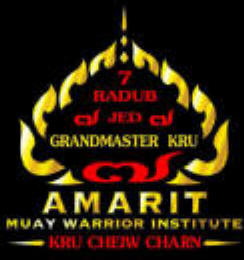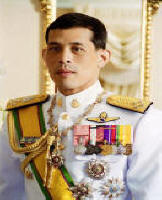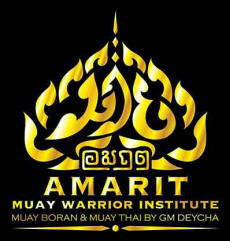It is impossible to give the correct pronunciation of Thai words by using the Roman alphabet without auxiliary signs. However, by observing the following pronunciation guide, the words will be understood if used in context.
Pronounce
"a"
like the
"u" in
cup
aa
a
spa
ae
a
man
ai
i
fight
aw
aw
law
e
e
set
eh
ea
bear
i
i
fit
ee
ee
feet
o
oa
board
u
u
put
oo
oo
food
ue
ui
French
dt
is a consonant somewhat between a "d" and "t".
The National Language
The official national language, spoken by almost 100 per cent of the population, is Thai, classified by linguists as belonging to a Chinese-Thai branch of the Sino-Tibetan family. It is a tonal language, uninflected, and predominantly monosyllabic. Most polysyllabic words in the vocabulary have been borrowed, mainly from Khmer, Pali or Sanskrit. Dialects are spoken in rural areas. Principal other languages are Chinese and Malay. English, a mandatory subject in public schools, is widely spoken and understood, particularly in Bangkok and other major cities.
Muay Thai Terminology Aenken
Anklet, protecting instep and shin
Andap
Ratings
Baak
Mouth
Bangkok
Capital of Thailand
Bat
Block
Chaikrong
Floating ribs
Champ
Champion
Chiang Mai
Provincial capital in the North. Seond largest city in Thailand
Chok
Fight
Choraked faad haang
Turn kick, literally 'crocodile thrashes its tail'
Dadsin
To judge, to decide
Daihuachai
Region under the heart, a vital point.
Dermpan
A form of betting.
Dontree Muay
The music played during a match
Dtaa
Eyes
Dtaai
To die
Dtae
To kick
Dtae Kao
Knee kick
Dtae Tao
Kick with foot
Dtae Wiang
Round kick
Dtai
Kidneys, a vital point.
Dtai Kao
Knee kick from side
Dtee
To hit
Dtee Mat
To hit with the fist
Dtee Sawk
To hit with the elbow
Dtoi
To box, boxing
Dtoi Lom
Shadow boxing, literally to box with the wind or air.
Faad
To thrash, wipe, swipe
Faidaeng
The red corner
Fainamnerng
The blue corner
Gamagan
Referee
Gaan Dadsin
Judging
Gangkeng Muay
Boxer's trunks
Gawn Welaa
Literally before time. "Gawn welaa" bouts, reserved for novices, are held before the program starts.
Grajab
Groin guard
Grammon Srisa
Top of head, a vital point
Grasawb
Bag, punching bag
Hua
Head
Huajai
Heart
Hook
Hook, word borrowed from English.
Jad
Promote
Jamook
Nose
Kaa
Leg
Kaen
Arm
Kai
Camp
Kai Muay
Boxing camp
Kagangai
Jawbone, a vital point
Kamab
Temples, vital points.
Kao
Knee
Kao Kong
Over-arm knee kick
Kao Loy
Jumping knee kick
Kao Drong
Frontal knee kick
Khuen Kroo
The ceremony during which a teacher accepts a new student.
Koo Ek
Main bout on a card, literally the "number one pair".
Kradot
Jump
Dradot Dtae
Jump kick
Druang Rang
Bands worn around biceps
Kroo Muay
Boxing teacher
Kwaa
Right, to the right
Lang Tao
Instep
Limpee
Solar Plexus, a vital point
Mat
Fist
Mat At
Uppercut
Mat Drong
Straight punch
Mao Mat
"Punch drunk"
Mongkon
The headband worn during pre-fight ceremony
Muay Acheep
Professional boxing
Muay Thai
Thai-style boxing
Muay Sakon
International-style boxing
Na Kaeng
Shin
Nak Muay
Boer
Namnak
Weight
Na Paang
Forehead
Nuam
Gloves
Pang-nga
To dodge, evade
Paa Pan Mue
Bandages worn under gloves
Pee Liang
Seconds
Raigaan Muay
Boxing program
Ram Muay
Boxing dance, part of the pre-fight ritual
Run
Weight category
Saai
Left, to the left
Sanam Muay
Boxing stadium
Sawing
Swing, the word comes from the English "swing"
Sawk
Elbow
Sangwien Ring Ropes Sawk Chieng Diagonal Elbow Sawk Hug Levering Elbow Sawk Klab Reverse Elbow Sawk Ku Double Elbow Sawk Sob Chopping Elbow Sawk Tad Jab Elbow Sawk Tong Smashing Down Elbow Taitai
Nap, a vital point
Tao
Foot
Teep
Push or thrust with the underside of the foot
Teep Dan Lang
Foot thrust to the rear
Teep Duen Son
Heel push
Teep Drong
Straight forward foot push
Ting
Throw
Tong
Stomach
Tong Noi
Lower stomach, a vital point
Uppercut
Uppercut, borrowed from English
Wai Kroo
Obeisance to the teacher, part of the pre-fight ritual.
Wehtee
The ring, a stage
Wong
Band
Wong Muay
The orchestra that plays during matches
Yaeb
Jab, borrowed from English
Yaek
Break, used by referee in the ring to separate fighters.
Yang gan fan
Mouth guard
Yang Sam Kung
Three step dance, part of the Ram Muay
Yok
Round
Yud
Stop, used by referee
Commonly Used Phrases Sa wadee Hello La kon Goodbye Aroon sa wadee Good morning Sayan sa wadee Good evening Ra tree sa wadee Goo d night Chan shue My name is Khob chai mark Thanks, very much Khob ton rub tharn You are welcome Tharn sa bi dee rhuee You are welcome Chan mai khao chai I don't understand Shuay chan noi doi ma? Can you help me? Chan ma chark saha rat I am from the U.S. Tharn wa yarng rai? How do you say? We la tao r ai? What time is it? Chan ma chark saha rat I can't speak Thai Chan pood dai tae pasa Anglish I speak English Prode pood hai sah kwa nee Please speak more slowly Basic Numbers 1 through 10 Nueng One Sorng Two Sarm Three Se e Four Ha Five Hok Six Ched Seven Paed Eight Kao Nine Sib Ten
Learn more the language of Muay Thai with the following Glossary and Terminology terms:
Aenken – Anklet, protecting instep and shin.
Andap – Ratings
Baak – Mouth
Bangkok – Capital of Thailand
Bat – Block
Chaikrong – Floating ribs
Champ – Champion
Chiang Mai – Provincial capital in the North, second largest city in Thailand
Chok – Fight
Choraked faad haang – Turn kick, literally the crocodile thrashes its tail
Dadsin – To judge, to decide
Daihuachai – Region under the heart, a vital point
Dermpan – A form of betting
Dontree Muay – The music played during a match
Dtaa – Eyes
Dtaai – To die
Dtae – To kick
Dtae Kao – Knee kick
Dtae Tao – Kick with foot
Dtae Wiang – Round kick
Dtai – Kidneys, vital point
Dtai Kao – Knee kick from side
Dtee – To hit
Dtee Mat – To hit with the fist
Dtee Sawk – To hit with the elbow
Dtoi – To box, boxing
Dtoi Lom – Shadow boxing, literally to box with the wind or air
Faad – To thrash, wipe, swipe
Faidaeng – The red corner
Fainamnerng – The blue corner
Gamagan – Referee
Gaan Dadsin – Judging
Gangkeng Muay – Boxer’s trunks
Gawn Welaa – Literally before time, “gawn welaa” bouts are held before the actual programme starts and reserved for novices.
Grajab – Groin guard
Grammom Srisa – Top of head, a vital point
Grasawb – Bag, punching bag
Hua – Head
Huajai – Heart
Hook – Hook, the word is borrowed from English
Jad – Promote
Jamook – Nose
Kaa – Leg
Kaen – Arm
Kai – Camp
Kai Muay – Boxing camp
Kagangai – Jawbone, a vital point
Kamab – Temples, vital points
Kao – Knee
Kao Kong – Over-arm knee kick
Kao Loy – Jumping knee kick
Kao Drong – Frontal knee kick
Khuen Kru – The ceremony during which a teacher accepts a new student
Ku Ek – Main bout on a card, literally the “number one pair”
Kradot – Jump
Kradot Dtae – Jump kick
Kruang Rang – Bands worn around biceps
Kru Muay – Boxing teacher
Kwaa – Right, to the right
Lang Tao – Instep
Limpee – Solar Plexus, a vital point
Lop To duck
Luk Anta – Testicles
Luk Gradueak – Adam’s apple, a vital point
Luk Kang – Chin, a vital point
Mat – Fist
Mat At – Uppercut
Mat Drong – Straight punch
Mao Mat – “Punch drunk”
Mongkon – The headband worn during pre-fight ceremony
Muay Acheep – Professional boxing
Muay Thai – Thai Boxing, or Thai-style boxing
Muay Sakon – International-style boxing
Na Kaeng – Shin
Nak Muay – Boxer
Namnak – Weight
Na Paag – Forehead
Nuam – Gloves
Pang-nga – To dodge, evade
Paa Pan Mue – Bandages worn under gloves
Pee Liang – Seconds
Raigaan Muay – Boxing programme
Ram Muay – Boxing dance, part of the pre-fight ritual
Run – Weight category
Saai – Left, to the left
Sanam Muay – Boxing stadium
Sangwien – Ring ropes
Sawing – Swing, the word comes from the English “swing”
Sawk – Elbow
Taitoi – Nape, a vital point
Tao – Foot
Teep – Push or thrust with the underside of the foot
Teep Dan Lang – Foot thrust to the rear
Teep Dueh Son – Heel push
Teep Drong – Straight forward foot push
Ting – Throw
Tong – Stomach
Tong Noi – Lower stomach, a vital point
Uppercut – Uppercut, borrowed from English
Wai Kru – Obedience to the teacher, part of the pre-fight ritual.
Wehtee – The ring, a stage
Wong – Band (musical)
Wong Muay – The orchestra that plays during matches
Yaeb – Jab, borrowed from English
Yaek – Break, used by referee in the ring to separate fighters
Yang gan fan – Mouth guard
Yok – Round
Yud – Stop, used by referee
Richly diverse in origin, the Thai language in use today is the end-result of a centuries-long maturation.
Early Thai settlers in the late Dvaravati period gradually enlarged their own Chinese-influenced, tonal, monosyllabic language by borrowing and adapting certain Mon and Khmer words. Later, the Thais absorbed polysyllabic Sanskrit (the classical language of Hindu India) and Pali words as Brahmanism and Theravada Buddhism asserted their shaping influences. Foreign traders and Chinese immigrants made minor additions in later centuries. Today, standard Thai is spoken nationwide with regional dialects differing widely from north to south and east to west.
King Ramakamhaeng of Sukhothai created the first Thai alphabet in 1283, basing it on Mon and Khmer scripts which, in turn, were derived from a South Indian script. With minor modifications - particularly individual character evolution into more refined shapes - Ramkamhaenge's alphabet survived in tact through the centuries so that the modern Thai can read 13th century inscriptions as easily as could his ancestors.
Importantly, Ramkamhaeng's achievement afforded the Thais a vital sense of unity and lent impetus to a distinctive Thai cultural identity. Indeed, several major literary worlds, mainly Buddish is character, were written during the following century.
The spoken Thai language lends itself to alliteration. Similar sounding words create pleasing rhythmic patterns and form a poetic language which is commonly used in everyday conversation. Indeed, poetry is a major Thai art, and until 1850 all Thai literary works were in verse form. Spoken and written similes are especially popular and parables are commonly employed, particularly for training children.
A gregarious race that loves to joke and laugh, the Thais greatly appreciate puns and double-enterdres which, besides enlivening everyday vernacular, spice and propel outrageous dialogue in popular art forms such as folk theatre.
The written Thai language, read horizontally from left to right, as in English, consists of 44 consonants and 32 vowels that combine to formulate sysllabic sounds. The sounds are combined with five different tones-even, high, low, rising and falling-to produce a melodious, lyrical language.
Generally speaking, spoken grammar is simple. The basic structure of Thai sentences is subject/verb/object with adjectives following nouns. In many case, verbs can be changed into nouns with the use of a prefix, e.g. khit (think) with the prefix kwam becomes kwam khit (thought).
Each Thai word is complete inasmuch as there are no Thai suffixes, genders, articles, declensions or plurals. Tenses are indicated by standard auxiliaries, e.g. pai (go) with the auxiliary ja becomes ja pai (will go); with the auxiliary kamlang becomes kamlang pai (am going); and with the auxiliary laew becomes pai laew (go already (went)).
Different pronouns (at least 47, including some 17 I's and 19 you's) and different qualifying nouns and verbs are used by different class - royalty, ecclesiastics and lay people. Because Thai's pronominal structure illustrates rank and intimacy, there are, in effect, four different languages - a royal language, an ecclesiastic language, a polite everyday vernacular and an earthy, pungent slang.
Illustrative of this wide range of variations is the verb to 'eat'. In royal language, the word is sawuy; in ecclesiastic Thai, chan; rappratan is a formal word used on engraved invitations and its shortened from, tan is everyday polite usage. Kin is a colloquial form used between friends; to use it with a new acquaintance would be viewed as presumptuous and perhaps rude. Even father down are several vulgarisms which are offensive except when used between ma le intimates in informal situations. (In the written language it is important to understand that words within sentences are not separated, punctuation is rare and grammar can be complicated.)
The most unusual of Thailand's "four languages" is the royal language, rachasap. Royalty uses special words for common actions and for parts of the body. This special, formal language is a mixture of words of Khmer, Pali and Sanskrit origin complemented by specially-coined Thai words. The Khmer-derived words are the same as those commonly begin spoken throughout Cambodia today.
Rachasap is usually reserved for formal and state occasions, most royalty making use of standard Thai, slightly modified, for everyday conversation among themselves.
In conventional spoken Thai, two or more words are often combined to form literal descriptions of common objects. Thus, 'ice' is nam khaeng (solid water) and 'match' is mai keet fai (stick/strike/fire).
Although satisfactory for common objects, this system is inadequate for coining new Thai words that can accurately convey Western concepts or recent scientific terms. Accordingly, the Royal Institute, a government body responsible for publishing the T hai encyclopedia, employs its commitee of language experts to coin equivalent Thai words by drawing upon Pali and Sanskrit sources.
As a consequence, Thailand keeps pace with international trends and scientific developments, proof that, in one important respect, Thai is still a growing language.
Standard Thai, also known as Central Thai or Siamese, is the official language of Thailand, spoken by about 65 million people (1990) including speakers of Bangkok Thai (although the latter is sometimes considered as a separate dialect). Korat Thai is spoken by about 400,000 (1984) in Nakhon Ratchasima; it occupies a linguistic position somewhere between Central Thai and Issan on a dialect continuum, and may be considered a variant or dialect of either.In addition to Standard Thai, Thailand is home to other related Tai languages, including:
- Isan (Northeastern Thai), the language of the Isan region of Thailand, considered by some to be a dialect of the Lao language, which it very closely resembles (although it is written in the Thai alphabet). It is spoken by about 15 million people (1983).
- Nyaw language, spoken mostly in Nakhon Phanom province, Sakhon Nakhon province, Udon Thani province of Northeast Thailand.
- Galung language, spoken in Nakhon Phanom province of Northeast Thailand.
- Lü (Tai Lue, Dai), spoken by about 78,000 (1993) in northern Thailand.
- Northern Thai (Lanna, Kam Meuang, or Thai Yuan), spoken by about 6 million (1983) in the formerly independent kingdom of Lanna (Chiang Mai).
- Phuan, spoken by an unknown number of people in central Thailand and Isan.
- Phu Thai, spoken by about 156,000 around Nakhon Phanom province (1993).
- Shan (Thai Luang, Tai Long, Thai Yai), spoken by about 56,000 in north-west Thailand along the border with the Shan States of Burma (1993).
- Song, spoken by about 20,000 to 30,000 in central and northern Thailand (1982).
- Southern Thai (Pak Dtai), spoken about 5 million (1990).
- Thai Dam, spoken by about 20,000 (1991) in Isan and Saraburi province.
Statistics are from Ethnologies 2003-10-4.
Many of these languages are spoken by larger numbers outside of Thailand. Most speakers of dialects and minority languages speak Central Thai as well, since it is the language used in schools and universities all across the kingdom.
Numerous languages not related to Thai are spoken within Thailand by ethnic minority hill tribes people. These languages include Hmong-Mien (Yao), Karen, Lisu, and others.
Standard Thai is composed of several distinct registers, forms for different social contexts:
- Street Thai (ภาษาพูด, spoken Thai): informal, without polite terms of address, as used between close relatives and friends.
- Elegant Thai (ภาษาเขียน, written Thai): official and written version, includes respectful terms of address; used in simplified form in newspapers.
- Rhetorical Thai: used for public speaking.
- Religious Thai: (heavily influenced by Sanskrit and Pāli) used when discussing Buddhism or addressing monks.
- Royal Thai (ราชาศัพท์): (influenced by Khmer) used when addressing members of the royal family or describing their activities.
Many Thais can speak at only the first and second levels, though they will understand the others


 “Long Live The King”
“Long Live The King”


His Majesty King Bhumibol Adulyadej of Thailand
